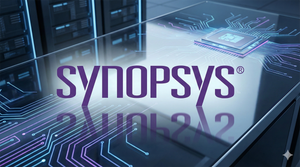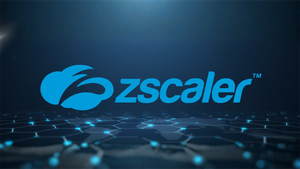
Residential solar energy company Sunrun (NASDAQ: RUN) announced better-than-expected revenue in Q3 CY2025, with sales up 34.9% year on year to $724.6 million. Its GAAP profit of $0.06 per share was 58.2% below analysts’ consensus estimates.
Is now the time to buy RUN? Find out in our full research report (it’s free for active Edge members).
Sunrun (RUN) Q3 CY2025 Highlights:
- Revenue: $724.6 million vs analyst estimates of $592 million (34.9% year-on-year growth, 22.4% beat)
- EPS (GAAP): $0.06 vs analyst expectations of $0.14 (58.2% miss)
- Adjusted EBITDA: $185.2 million vs analyst estimates of $74.77 million (25.6% margin, significant beat)
- Operating Margin: 0.5%, up from -23.8% in the same quarter last year
- Customers: 1.14 million, up from 1.11 million in the previous quarter
- Annual Recurring Revenue: $1.86 billion vs analyst estimates of $1.80 billion (22.3% year-on-year growth, 3.3% beat)
- Market Capitalization: $4.71 billion
StockStory’s Take
Sunrun’s third quarter was marked by strong top-line growth, with management highlighting cost efficiencies and a rapid increase in storage adoption as key contributors. Despite exceeding Wall Street’s revenue expectations, the market reacted negatively, reflecting concerns over lower-than-expected GAAP earnings. CEO Mary Powell described the quarter as one where Sunrun “delivered higher unit margins and considerably more cash generation,” attributing performance to disciplined execution and a focus on storage-first strategies. Management acknowledged that while profitability improved, increased battery hardware and installation costs pressured margins.
Looking ahead, Sunrun’s strategy is centered on expanding recurring cash flows from grid services, growing adoption of its Flex product, and leveraging its distributed battery fleet to provide utility-scale resources. Management reiterated their focus on balancing margins with growth, emphasizing that future performance will depend on scaling storage offerings and cost discipline in a changing policy and supply chain environment. CFO Danny Abajian cautioned that supply chain adjustments and onshoring trends could introduce cost variability, but maintained that “we expect these effects to be net value accretive from a bonus ITC qualification standpoint.”
Key Insights from Management’s Remarks
Sunrun’s management pointed to strong storage attachment rates, disciplined customer acquisition, and a new asset monetization strategy as the main drivers behind both the quarter’s revenue growth and margin improvement, with notable developments in product mix and capital allocation.
-
Storage adoption accelerates: Management reported a sharp increase in battery attachment rates, especially in Massachusetts, where rates rose from under 10% to over 50% by quarter’s end. This storage-first approach was credited with driving higher margins and improved customer experience scores.
-
Flex product gains traction: The Flex offering, which allows customers to pay a baseline fee plus for extra energy as needed, saw rapid adoption in markets covering about half of Sunrun’s volume. CEO Mary Powell noted that “the take rate in markets where Flex is offered is already about 40%.”
-
Cost discipline and margin expansion: Sunrun achieved lower per-customer acquisition and overhead costs, helping offset higher installation and battery hardware expenses. These efficiencies, combined with increased subscriber value, led to a 38% year-over-year rise in net subscriber value.
-
Asset monetization diversification: The company introduced a new structure, selling a portion of new assets to infrastructure investors while maintaining customer relationships. CFO Danny Abajian explained this would partially simplify GAAP financials and diversify capital sources, without materially changing net cash generation.
-
Capital markets and liquidity: Sunrun raised $2.8 billion in tax equity and debt year-to-date, ensuring funding for future deployments and providing flexibility in transaction timing. Management emphasized the strength of its access to non-recourse debt and the ability to be selective in future financing activities.
Drivers of Future Performance
Sunrun’s outlook is shaped by a focus on expanding recurring revenue streams, disciplined margin management, and adapting to shifts in industry policy and supply chain dynamics.
-
Grid services and recurring revenue: Management expects ongoing growth in grid service programs, with the installed battery fleet enabling new streams of recurring cash flow. CEO Mary Powell described these distributed energy resources as “a powerful, flexible utility-scale resource for the energy system,” with incremental value expected as grid programs mature.
-
Flex product and storage scaling: Expanding the Flex offering and accelerating storage deployments are seen as key levers for future growth. Management noted that two-thirds of Flex customers are consuming above pre-solar energy baselines, supporting incremental revenue as adoption widens.
-
Policy, supply chain, and cost risks: CFO Danny Abajian highlighted the impact of onshoring trends and changing incentives (such as the Investment Tax Credit, or ITC) on module pricing and installation costs. While these factors could introduce short-term cost pressures, management anticipates net positive value as domestic content incentives are realized.
Catalysts in Upcoming Quarters
In the coming quarters, our team will be monitoring (1) the continued ramp of storage attachment rates and Flex product adoption, (2) the execution and impact of the new asset monetization strategy on cash flows and profitability, and (3) how Sunrun manages cost pressures amid shifting supply chain and policy incentives. The company’s ability to expand grid service programs and recurring revenue streams will also be key to tracking progress against long-term strategic goals.
Sunrun currently trades at $18.14, down from $20.37 just before the earnings. Is there an opportunity in the stock?Find out in our full research report (it’s free for active Edge members).
Our Favorite Stocks Right Now
Donald Trump’s April 2025 "Liberation Day" tariffs sent markets into a tailspin, but stocks have since rebounded strongly, proving that knee-jerk reactions often create the best buying opportunities.
The smart money is already positioning for the next leg up. Don’t miss out on the recovery - check out our Top 5 Strong Momentum Stocks for this week. This is a curated list of our High Quality stocks that have generated a market-beating return of 183% over the last five years (as of March 31st 2025).
Stocks that made our list in 2020 include now familiar names such as Nvidia (+1,545% between March 2020 and March 2025) as well as under-the-radar businesses like the once-micro-cap company Tecnoglass (+1,754% five-year return). Find your next big winner with StockStory today.
StockStory is growing and hiring equity analyst and marketing roles. Are you a 0 to 1 builder passionate about the markets and AI? See the open roles here.







